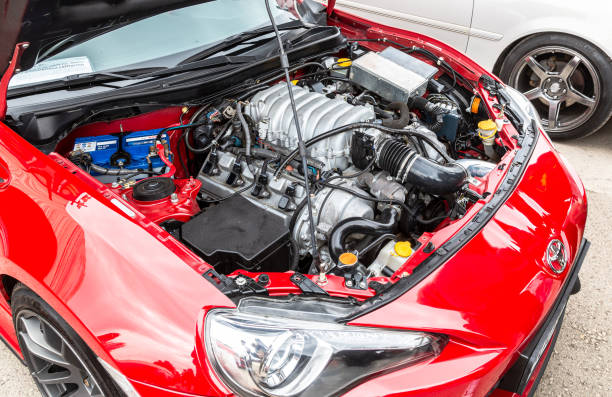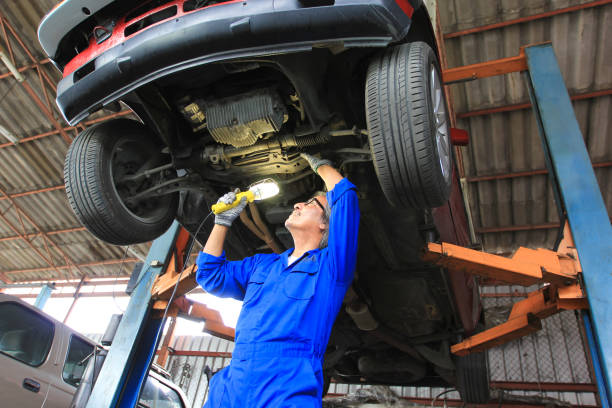When working with automotive lifts, safety and efficiency are paramount. Whether you’re a professional mechanic or a hobbyist, understanding how to properly adjust car lift arms is crucial. Improper adjustments can lead to accidents, damage to the vehicle, or even injury. This comprehensive guide will walk you through everything you need to know about car lift arm adjustment, hydraulic lift systems, and maintaining your vehicle lift operation to ensure safety and maximize efficiency.
The Core Components of a Car Lift
Before diving into the process of adjusting the lift arms, it’s essential to understand the car lift components involved in lifting and securing your vehicle. By familiarizing yourself with these elements, you’ll be better equipped to make safe and precise adjustments.
Car Lift Arms: The Backbone of Your Lift
Vehicle lift arms are the key structural components that support the vehicle. These arms extend from the main body of the lift and are positioned under the car’s chassis at specific points. Proper adjustment of these arms ensures that the car remains balanced and securely held during the lifting process.
Key points about car lift arms:
- Designed to distribute weight evenly across the car
- Can be adjusted to fit vehicles of various sizes and wheelbases
- Critical for vehicle stability during lifting
Hydraulic Cylinders: The Power Behind the Lift
Hydraulic cylinders are responsible for raising and lowering the car. They work by converting hydraulic fluid pressure into mechanical force, which lifts the car smoothly and safely.
There are two main types of hydraulic cylinders used in car lift systems:
- Single-acting cylinders: Hydraulic pressure is applied only in one direction, meaning the cylinder relies on external forces (like gravity) to return to its original position.
- Double-acting cylinders: Hydraulic pressure is applied in both directions, making these cylinders more versatile and capable of more controlled lifts.
| Cylinder Type | Pressure Application | Common Use |
| Single-acting | One-way | Basic car lifts |
| Double-acting | Two-way | Heavy-duty lifts |
Hydraulic Pumps and Control Valves
At the heart of every hydraulic lift system is a hydraulic pump, which generates the necessary pressure to power the hydraulic cylinders. The control valves in car lifts are used to manage the direction and flow of hydraulic fluid, regulating the lift’s motion.
These two components ensure the hydraulic pressure systems work smoothly, maintaining the safe operation of the lift. A failure in the pump or a valve malfunction can result in erratic arm movements, leading to unsafe lifting conditions.
Other Essential Automotive Lift Parts
Other automotive lift parts to consider when adjusting lift arms include:
- Lift locks: These mechanical locks engage automatically when the lift reaches certain heights, ensuring the car stays in place.
- Arm restraints: Prevent the arms from moving after they’ve been positioned under the vehicle.
- Load sensors: Some advanced lifts come with sensors that alert you if the car’s weight exceeds the lift’s capacity.
Step-by-Step Guide to Adjusting Car Lift Arms for Safety

Correctly adjusting car lift arms is a critical step in ensuring car lift safety. Below, we provide a detailed guide to adjusting lift arms efficiently while keeping safety as the top priority.
Pre-Adjustment Safety Checks
Before making any adjustments, conduct a thorough safety inspection of your lift system:
- Check hydraulic fluid levels to ensure smooth operation of the hydraulic pump for car lift.
- Visually inspect hydraulic cylinders for any signs of leaks or wear.
- Confirm the lift arms are in good condition, free of cracks or rust.
- Test the control valves to ensure proper fluid flow and pressure regulation.
Always ensure that your lift is rated for the weight of the vehicle you’re working on. This is crucial for avoiding overloading the lift’s load capacity.
Adjusting Lift Arms for Different Vehicle Types
Not all vehicles are created equal, which means different types will require different arm adjustments. Here’s how to approach car lift arm adjustment based on vehicle type:
- For Sedans: Set the arms at standard heights, making sure to position them at the manufacturer-recommended lift points.
- For SUVs and Trucks: These vehicles usually have higher ground clearance. You’ll need to extend the arms fully and adjust them to accommodate the vehicle’s longer wheelbase.
- For Low-Profile Cars: With sports cars and other low-profile vehicles, lower the arms to their minimal height to avoid scraping the vehicle during the lift.
Achieving Proper Balance and Stability
Proper balance is crucial for car lift safety. Unevenly adjusted arms can cause the car to tip or become unstable during lifting. To avoid this, ensure that all four arms are evenly adjusted and securely placed under the vehicle’s recommended lifting points.
Some tips for maintaining proper balance:
- Double-check arm positioning before lifting the car.
- Use the lift’s leveling feature (if available) to ensure equal distribution of weight.
- Keep an eye on the vehicle’s position as it’s being lifted. If one side rises faster, stop immediately and reassess.
Locking Mechanisms and Safety Features
Engaging the lift’s locking mechanisms is a non-negotiable safety step. Most modern lifts feature mechanical locks that automatically engage at set intervals. These locks prevent the lift from collapsing in case of hydraulic failure. Always engage these locks after adjusting the arms and before working under the vehicle.
Final Checks Before Lifting
Before you begin lifting the vehicle:
- Ensure all arms are locked into place.
- Visually inspect the vehicle to ensure it’s positioned correctly and that the lift’s weight limit hasn’t been exceeded.
- Listen for any unusual noises, such as hissing or clicking, which could indicate a problem with the hydraulic pressure systems.
Troubleshooting Common Issues During Arm Adjustments
Even with the best planning, issues can arise when adjusting vehicle lift arms. Here are some common problems and how to solve them.
Misaligned Lift Arms
Misaligned lift arms can cause the vehicle to be unstable during lifting. Causes of misalignment may include:
- Uneven floor surfaces
- Incorrect arm adjustment
- Wear on the hydraulic system
Solution: Reposition the arms, making sure each arm is equally spaced from the car’s centerline. You may also need to recalibrate the lift’s hydraulics.
Uneven Vehicle Support
An uneven lift can cause the vehicle to lean or sway, which is highly dangerous. This often happens when arms are not adjusted correctly, or when there’s a problem with the hydraulic cylinders.
Solution: Lower the car and adjust the arms again, paying special attention to the lifting points.
Hydraulic Failures
Hydraulic systems occasionally experience pressure loss, which can cause the lift to move erratically or stop working altogether.
Solution: Check for leaks in the hydraulic fluid systems. If you spot a leak, you’ll need to replace the damaged components before proceeding. Regular maintenance of the hydraulic pump for car lifts can prevent this issue.
Best Practices for Lift Maintenance and Prolonging Lift Arm Life
Proper maintenance of your car lift components is essential for ensuring safety and extending the life of your lift. Here are some maintenance practices to follow:
Regular Maintenance Routines
Perform regular inspections to ensure all car lift components are in good working order:
- Check hydraulic fluid levels regularly and replace fluid as needed.
- Inspect lift arms for signs of wear and tear.
- Lubricate moving parts, including hinges and arm joints, to ensure smooth movement.
Servicing Hydraulic Cylinders and Pumps
Hydraulic systems are the backbone of any vehicle lift operation. Regularly inspect and service hydraulic cylinders to prevent leaks and maintain the system’s lifting capacity. Also, inspect the control valves to ensure proper flow and avoid pressure buildup.
| Maintenance Task | Frequency |
| Inspect hydraulic fluid | Monthly |
| Lubricate moving parts | Every 6 months |
| Test safety locks | Quarterly |
| Check lift alignment | Annually |
Preventing Wear on Lift Arms
To avoid premature wear on car lift arms, never exceed the lift’s load capacity. Overloading the lift can cause permanent damage to the arms and hydraulic systems. Always follow the manufacturer’s guidelines for maximum weight and vehicle size.
Importance of Training and Certification for Car Lift Operators

Training is critical for anyone operating a car lift. Proper instruction on vehicle lift operation can prevent accidents and equipment damage. Many organizations offer certification programs that cover:
- Car lift safety procedures
- Maintenance and repair of hydraulic lift systems
- Safe operation of control valves and hydraulic systems
Conclusion
Understanding how to properly adjust and maintain car lift arms is key to ensuring both safety and efficiency when working with vehicles. From knowing the different types of hydraulic cylinders to troubleshooting common issues, this guide provides you with everything you need to master your car lift operation. By following these steps and maintaining your equipment, you’ll avoid accidents and keep your lift in optimal condition for years to come.
Also Read More Article : TPMS (Tire Pressure Monitoring System)
